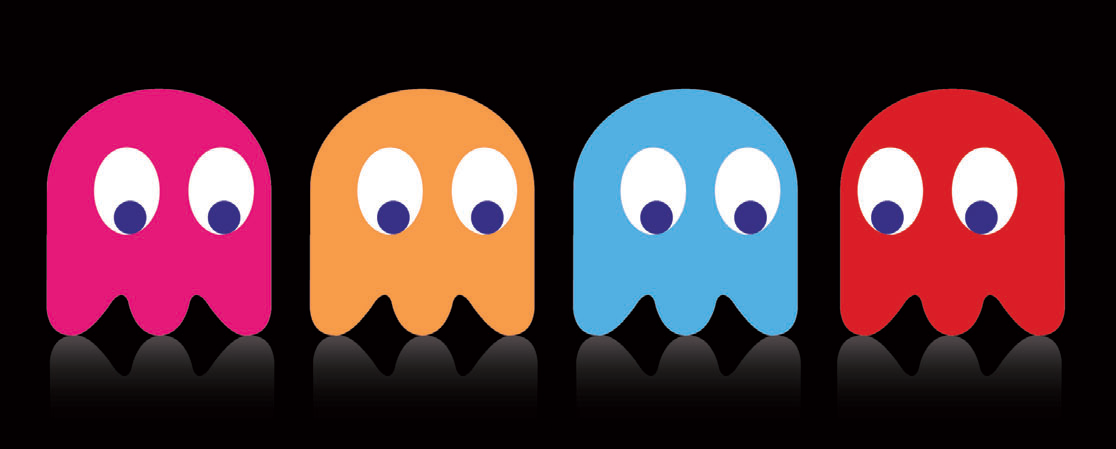ANCORA IMPARO BY RICK RADER, MD ■ EDITOR-IN-CHIEF
If Pac-Man is indeed the unofficial game of exceptional parents, then the battle cry of their
movement will always be “paku-paku;” as they munch and gobble up anyone who stands in
the way of inclusion, acceptance and respect.
Rick Riordan is an American novelist who hit it big with his 2005 novel The Lightning Thief, the first installment in the five volume Percy Jackson series. Riordan came up with the idea for the Percy Jackson episodes when he found himself making up bedtime stories about ancient Greek heroes for his son Haley, a young boy with ADHD and dyslexia. It was a no brainer for Riordan to be inspired to portray the hero of the adventures as a youngster with ADHD and dyslexia.
There’s a favorite exchange of mine in the book that served as the seed for this month’s offering.
“You do know how to play
pinochle?” Mr. D eyed me suspiciously.
“I’m afraid not,” I said.
“I’m afraid not, sir,” he said.
“Well,” he told me, “it is, along
with gladiator fighting and Pac-Mac,
one of the greatest games ever invented
by humans. I would expect all civilized
young men to know the rules.”
There is no doubt that the Pac-Mac video game was the electronic analogue of gladiator fighting, without the screaming crowds giving the thumbs up or thumbs down vote. In fact Pac-Mac revealed as much about ourselves as the action in the Coliseum revealed about the Romans.
In 1980, Toru Iwatani a young Japanese video game designer working for Namco, a company well known for amusement park rides and game arcades, had an epiphany. Up until that time the most popular video games had space combat themes like Space Invaders and Asteroids.
Iwatani wanted to attract women into Japan’s arcades and he knew they had little interest in shooting down aliens from outer space. He first thought that the new game should be centered around fashion and shopping, two strong female interests. For some reason he jettisoned the idea and opted to focus on food. He was still not confident in which theme he would promote and, like most of us, he decided to go out for lunch and mull it over.
He ordered a pizza, pulled off a slice, looked at the pie and Pac-Man was born.
Originally the game was known (in Japan) as “paku-paku”, which translates as the sound of eating or munching. He proposed that the pellets that Pac-Man would consume would be big cookies. The name was changed to Pac-Man when the game was licensed in the United States and marketing feared that “pakupaku” would morph into one of the seven “never to be said” words made famous by comedian George Carlin. Paku-paku is a Japanese onomatopoeic slang phrase that mimics the sound of someone’s mouth opening and closing as they eat. Iwatani threw in some chirpy music and a cast of “cute” characters and the game took off.
It became the most successful arcade game of all time. In fact, it became a social phenomenon. It had generated more than $2.5 billion in quarters by the 1990s. It resides in both the Smithsonian Institution in Washington, D.C. and in New York’s Museum of Modern Art. The Pac-Man icon is one of the most recognized characters in the world.
Pac-Mac is the unofficial game of exceptional parents nationwide. Even the newest generation of EP parents, who never played Pac-Man and Ms. Pac-Man intrinsically understand the ground rules; rules and strategies they play daily. According to The Fact Site, “The aim of Pac-Man is to survive many levels of puzzles whilst not being eaten by ghosts. The ghosts are an integral part of the gaming experience, moving at different algorithms to surprise the gamer.” This is very reminiscent of the “aim” of exceptional parenting. The “ghosts” in real life are well intended programs conceived by bureaucrats, programs designed by committees, “choices” determined and restricted by groups that have little skin in the game and exclusions for services that force families to move, litigate and camp out in Congressional offices.
One of the “ghosts” that lurk in the Pac-Man maze consist of Blinky. He is the red ghost. “After eating him, he takes you to the shortest route, but immediately follows you. Inky is the blue ghost. He is unpredictable and dangerous. Pinky is the pink ghost. He likes to take you to roundabout paths to surprise you.” Their actions and strategies appear to have come out of the plan book followed by various sinister systems and programs that are supposed to exist to support families. Michael Mateas, in “Expressive Artificial Intelligence and Games”, describes the “monsters and ghosts,” the enemies in Pac-Man. “Despite the seemingly random nature of the enemies, their movements are strictly deterministic, which players have used to their advantage.” These descriptions are well known to exceptional parents and provide the inspiration for their vigor, stamina and partnerships.
Perhaps the most significant similarity between Pac-Man and the exceptional parent movement is referenced in the designer’s master plan, ”Pac-Man was designed to have no ending – as long as at least one life was left, the game should be able to go on indefinitely.”
If Pac-Man is indeed the unofficial game of exceptional parents, then the battle cry of their movement will always be “pakupaku;” as they munch and gobble up anyone who stands in the way of inclusion, acceptance and respect.•
ANCORA IMPARO
In his 87th year, the artist Michelangelo (1475 -1564) is believed to have said “Ancora imparo” (I am still learning). Hence, the name for my monthly observations and comments.
 — Rick Rader, MD, Editor-in-Chief, EP Magazine Director, Morton J. Kent Habilitation Center Orange Grove Center, Chattanooga, TN
— Rick Rader, MD, Editor-in-Chief, EP Magazine Director, Morton J. Kent Habilitation Center Orange Grove Center, Chattanooga, TN


